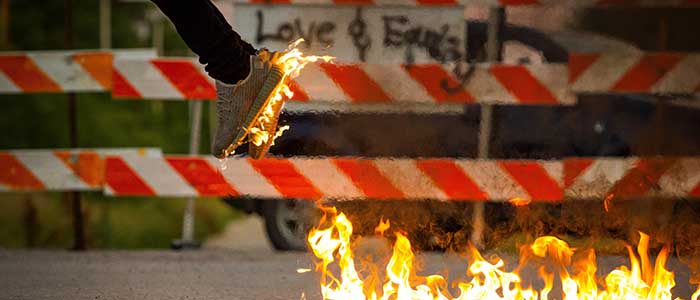Dashpivot article – How to write a construction phase plan

How to write a Construction Phase Plan
In the construction industry, the creation of a Construction Phase Plan (CPP) is a critical step in project management.
This document serves as a roadmap, guiding teams through the complexities of construction while ensuring safety and compliance.
Writing a CPP requires attention to detail, an understanding of construction processes, and a commitment to safety and efficiency.
This article provides a comprehensive guide on how to write a Construction Phase Plan, ensuring that your construction project is well-managed and compliant with industry standards.
If you want to read about the other aspects of a Construction Phase Plan, read more.
Understanding the purpose of a Construction Phase Plan
A Construction Phase Plan is a document that outlines how health, safety, and welfare will be managed during the construction phase of a project.
It's a requirement in many jurisdictions and is essential for ensuring a safe and efficient construction process.
Step-by-step guide on how to write a Construction Phase Plan
1. Begin with Project Information
Start your CPP with basic information about the project. This includes the project name, location, and a brief description of what the project entails. Include details about the client and key contacts, such as the project manager and safety officer.
2. Define Roles and Responsibilities
Clearly outline the roles and responsibilities of everyone involved in the project. This section should cover the project team, contractors, subcontractors, and any consultants. Include contact information and specify who is responsible for what aspects of the project, especially regarding safety and compliance.
3. Conduct a Thorough Risk Assessment
Identify potential hazards associated with the project and assess the risks they pose. This assessment should be comprehensive, covering everything from onsite physical hazards to environmental risks. Once risks are identified, describe the measures that will be put in place to mitigate them.
4. Outline Health and Safety Procedures
Detail the health and safety protocols that will be followed on the site. This includes the use of personal protective equipment (PPE), emergency procedures, and first-aid arrangements. Also, describe how you will ensure that all workers are aware of and follow these procedures.
5. Describe the Site Organization and Control Measures
Explain how the construction site will be organized. This section should cover site access, equipment storage, and waste management. Also, include how you will control hazards such as noise, dust, and traffic on and around the site.
6. Include a Communication Plan
Effective communication is key to a successful construction project. Outline how information will be communicated to workers, subcontractors, and stakeholders. Include how updates, changes, and safety alerts will be disseminated.
7. Provide Details on Worker Training and Induction
Specify the training and induction processes for new workers. Detail the safety training that will be provided and how you will ensure that workers understand the risks and procedures associated with the project.
8. Plan for Emergencies
Develop a comprehensive plan for emergencies. This should include evacuation procedures, emergency contact numbers, and the location of first aid kits and safety equipment.
9. Document Monitoring and Review Procedures
Explain how you will monitor compliance with the CPP and review its effectiveness. Include how often inspections will occur and who will be responsible for them.
10. Finalize and Review the Plan
Once you have completed the CPP, review it to ensure it is comprehensive and clear. It may be beneficial to have it reviewed by a colleague or a professional in the field. Ensure that the plan is accessible to all parties involved in the project.
Best Practices for Writing a Construction Phase Plan
- Be Detailed and Clear: Avoid vague language and be as specific as possible about procedures and expectations.
- Stay Compliant: Ensure that your plan meets all local and national safety regulations and standards.
- Keep It Dynamic: Be prepared to update and modify your CPP as the project evolves or new risks are identified.
- Involve Your Team: Engage with your team and other stakeholders in the development of the plan to ensure that all perspectives are considered.
Learning how to write a Construction Phase Plan is a critical step in project planning and execution in the construction industry.
A well-crafted CPP not only ensures compliance with legal requirements but also sets a foundation for a safe, efficient, and environmentally responsible construction project.
By following these steps and best practices, project managers and construction professionals can develop a CPP that not only meets legal standards but also significantly contributes to the successful and safe completion of construction projects.
See what a completed Construction Phase Plan could look like below.

Write digital CPPs with this free Construction Phase Plan template
Save time and reduce errors by using a digital Construction Phase Plan
Rather than writing a new CPP from scratch every time, use this standardised Construction Phase Plan template.
All of the fields and sections you need are pre-built, covering the project details, scope of work, roles and responsibilities, a section to attach risk assessments, signatures and more.
Customise the digital CPP with any extra information you need to capture with the drag and drop form builder, so whenever a new CPP is created the extra fields and sections are created within the form waiting to be completed by your team.
Automate your Construction Phase Plan processes
There's more to Construction Phase Plans than just writing a all-encompassing plan.
CPPs are a living document, that should be constantly updated with new risk information, work to be done, roles and responsibilities and more as construction projects progress.
Keep your team updated with the latest update to the construction phase plan by using this digital construction phase plan app.
Share your Construction Phase Plan to your team so they can access it on site via their mobile or tablet so they're working safely off of the latest information.
Share to external 3rd parties as perfectly formatted CSV or PDF to make safety audits quick and simple.

Near Miss Reporting template
Keep site safer by making your near miss reporting procedure safe and streamlined.

Incident Notification Form template
Document incidents and near misses properly, and more easily.

Lock Out Tag Out template
Use this LOTO template as a framework for doing all of your lock and tag outs properly and safely.


